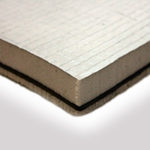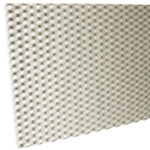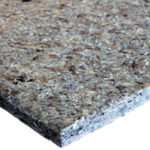
The balance of soundproofing and safety is an essential consideration at Soundproof Cow. That is why we offer a range of products that meet the highest American Society for Testing and Materials (ASTM) fire safety rating. Browse our online store to find Class A acoustic materials.
What Is a Class A Fire Rating?
The Class A fire rating indicates that a product meets the highest standard for preventing flame spread and smoke development. These materials are slow to burn, making them some of the safest to use in buildings. By burning slowly, they extend the time a building’s inhabitants have to escape during a fire.
The ASTM E84 Test
Class A products earn their rating through the ASTM E84 burn test. During this test, the testers place the material inside a steel box called a Steiner Tunnel. The Steiner Tunnel is 24 feet long and features a flame ignitor at one end. The testers then burn the material at one end for 10 minutes. They measure how far past the ignitor’s initial reach the flame travels after that time and how quickly it spreads during the test.
ASTM E84 evaluators score the material using the Flame-Spread Index (FSI). It compares the material’s performance to other materials on a 0-200 scale, where 0 is the most flame resistant or lowest flame spread. FSI scores of 25 or less qualify a material for the highest ASTM E84 for the highest rating — Class A.
Why a Class A Fire Rating Matters for Soundproofing Materials
When you add acoustic treatments to your home or office, you first think about their ability to block or absorb sound. However, it is equally important to consider how the material will help or harm you during a fire.
Time to Reach Safety
If a fire occurs, you will have an average of two minutes to escape the building. Home furnishings can play a critical role in your ability to reach safety. Furnishings that feature a flame-resistant exterior barrier can delay flashover, which is when a contained flame increases its rate of spread. Delaying flashover maximizes your time to reach safety and allows more time for first responders to reach the scene.
Acoustic materials can influence a fire’s spread similarly to other furnishings. A material that burns slowly increases safety during a fire and provides daily peace of mind. The Class A rating validates the material’s flame resistance and is a valuable attribute of any acoustic product.
Building Code Requirements
In addition to safety and peace of mind, products with a Class A rating can satisfy strict building codes. Chapter 7 of the 2021 International Building Code (IBC) requires concealed and exposed sound-insulating materials, such as acoustic insulation, to have an FSI rating of 25 or lower. All Class A materials meet IBC Chapter 7 requirements.
Products That Have a Class A Fire Rating
At Soundproof Cow, we offer materials that achieve top-level fire safety performance through their physical and chemical composition. Many of our products meet and exceed the FSI threshold for the fire rating Class A. Our flame-resistant products are safe to use in homes and commercial spaces near hot objects and electrical equipment.
Here are some examples of our dependable Class A fire rated acoustic treatments:
- Quiet Batt® Soundproofing Insulation
- Class A™ Acoustic Foam Panels
- Udderly Quiet® Fabric Covered Foam
- Echo Absorber™ Acoustic Panel
Browse Soundproof Cow’s Class A Acoustic Materials
Fire rated acoustic materials perform among the best in the areas that matter most. You can purchase various flame-resistant products through Soundproof Cow. Our fire-resistant soundproofing insulation and many of our acoustic foams feature a Class A flame rating that validates their industry-leading fire safety. Check out our flame-resistant acoustic solutions online, or contact Soundproof Cow to learn more about how we blend safety and soundproofing.











